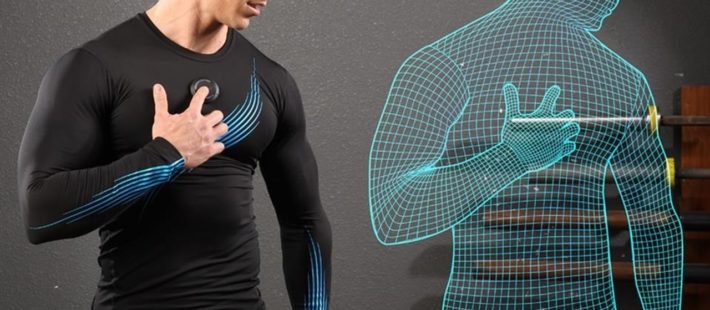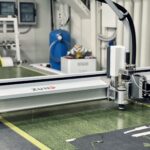Wearable electronics doesn’t only mean dresses emitting sparkling light from hundreds of small LEDs, but also sensors integrated in functional textiles to monitor, for example, water evaporation or temperature changes. Chinese scientists have manufactured fibrous electrodes for wearable devices that are flexible and excel by their high energy density. Key for the preparation of the electrode material was a microfluidic technology, as shown in the journal «Angewandte Chemie».
Energy storage systems powering such wearable devices must combine deformability with high capacity and durability. The problem is that deformable electrodes often fail in long-term operation, and their capacity lags behind that of other state-of-the-art energy storage devices.
Electrode materials usually benefit from a fine balance of porosity, conductivity, and electrochemical activity. Material scientists Su Chen, Guan Wu, and their teams from Nanjing Tech University, China, have looked deeper into the material demands for flexible electrodes and developed a porous hybrid material synthesized from two carbon nanomaterials and a metal-organic framework. The nanocarbons provided the large surface area and excellent electrical conductivity, and the metal-organic framework gave the porous structure and the electrochemical activity.
To make the electrode materials flexible for wearable applications, the micro-mesoporous carbon frameworks were spun into fibers with a thermoplastic resin by using an innovative blow-spinning machine. The resulting fibers were pressed into cloths and assembled into supercapacitors, although it turned out that another round of coating with the micro-mesoporous carbon frameworks further improved the electrode performances.
The supercapacitors made from these electrodes were not only deformable, but they could also harbor higher energy densities and larger specific capacitances than comparable devices. They were stable and endured more than 10,000 charge-discharge cycles. The scientists also tested them in practical applications such as smart color switching of LEDs in dresses and solar-cell-controlled powering of electronic devices integrated in functional clothing.
The authors pointed out that the microfluidic droplet-based synthesis was key to improving the performance of the electrode materials for wearable electronics. It was all about adjusting the perfect porous nanostructure, they argued.
Source: Phys.org












